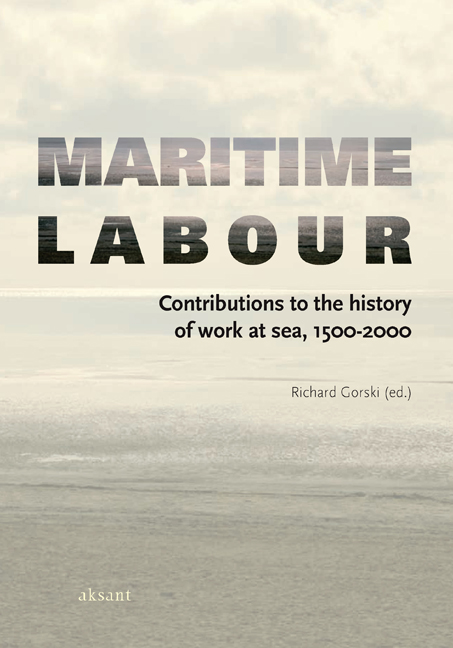Book contents
- Frontmatter
- Contents
- Introduction
- Six Cross-sections of the Dutch Maritime Labour Market: A Preliminary Reconstruction and its Implications (1610-1850)
- On Maritime Labour and Maritime Labour Markets in Germany, 1700-1900
- Swedish Naval Personnel in the Merchant Marine and in Foreign Naval Service in the Eighteenth Century
- Quantifying British Seafarers, 1789-1828
- ‘But for the Loves of the Fishes’: Maritime Labour and Ecological Culture in Nineteenth-century Newfoundland
- The Shipping Federation and the Free Labour Movement: A Comparative Study of Waterfront and Maritime Industrial Relations, c.1889-1891
- Health and Safety Aboard British Merchant Ships: The Case of First Aid Instruction, 1881-1908
- British Merchant Marine Engineer Licensing, 1865-1925
- Transatlantic Fishers: New England and British Trawlermen, 1960-1972
- Masters and chiefs: Enabling globalization, 1975-1995
- About the Contributors
Health and Safety Aboard British Merchant Ships: The Case of First Aid Instruction, 1881-1908
Published online by Cambridge University Press: 26 January 2021
- Frontmatter
- Contents
- Introduction
- Six Cross-sections of the Dutch Maritime Labour Market: A Preliminary Reconstruction and its Implications (1610-1850)
- On Maritime Labour and Maritime Labour Markets in Germany, 1700-1900
- Swedish Naval Personnel in the Merchant Marine and in Foreign Naval Service in the Eighteenth Century
- Quantifying British Seafarers, 1789-1828
- ‘But for the Loves of the Fishes’: Maritime Labour and Ecological Culture in Nineteenth-century Newfoundland
- The Shipping Federation and the Free Labour Movement: A Comparative Study of Waterfront and Maritime Industrial Relations, c.1889-1891
- Health and Safety Aboard British Merchant Ships: The Case of First Aid Instruction, 1881-1908
- British Merchant Marine Engineer Licensing, 1865-1925
- Transatlantic Fishers: New England and British Trawlermen, 1960-1972
- Masters and chiefs: Enabling globalization, 1975-1995
- About the Contributors
Summary
Introduction
During the nineteenth century loss of life was one of the principal causes of state intervention in the business of shipping and seafaring. When government turned its gaze toward the sea, as it often did in this period, its objective frequently was to protect the lives and property engaged on the world's shipping lanes. Huge resources, whether calculated in money or man-hours, were directed toward the investigation and improvement of maritime safety. The front in this campaign was necessarily broad, for it encompassed issues as diverse as nautical design and construction, competent navigation and manning, proper cargo stowage and insurance arrangements. Steam propulsion added further peculiarities. Each of these matters was complex in its own right, but there were also intricate inter-relationships between them that were difficult to unpick. This made progress across the whole front difficult and unpredictable. Moreover, to these technical or ‘industry-related’ problems must be added other obstacles that were erected by interest groups within the ambit of shipping who resisted change.
The progress of reform over the century as a whole was somewhat erratic, but there was an appreciable intensification of effort during the 1880s and 1890s in the wake of Plimsoll's high-profile campaign for a compulsory load line. By this point safety at sea in one form or another was rarely absent from the parliamentary agenda – before a Select Committee of 1880 a senior Board of Trade official observed that ‘scarcely a year passes without some Bill about merchant shipping’ – and in part it is this aggregation of effort that has drawn historians to consider the evolution of policy in this field. In this task they have been assisted, if not overwhelmed, by the prodigious Victorian appetite for statistics on the incidence of wrecks, collisions, accidents, deaths and injuries in the mercantile marine, and by the findings of official courts and parliamentary enquiries that were set up to deal with particular cases or issues. One should add to this the material produced by the permanent monitoring regime of the Marine Department of the Board of Trade, established in 1850, and its agencies in the ports, the Mercantile Marine Offices and Local Marine Boards.
- Type
- Chapter
- Information
- Maritime LabourContributions to the History of Work at Sea, 1500–2000, pp. 155 - 184Publisher: Amsterdam University PressPrint publication year: 2008



